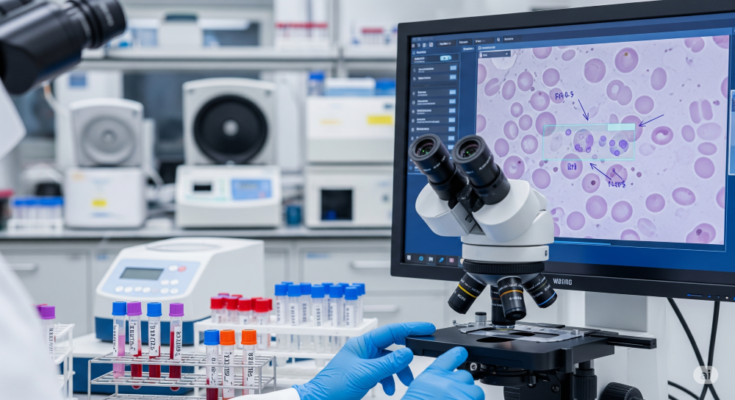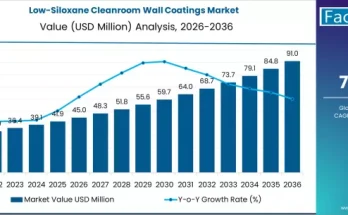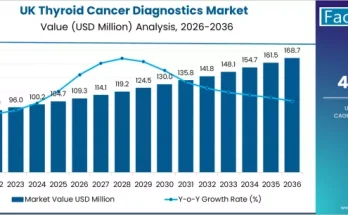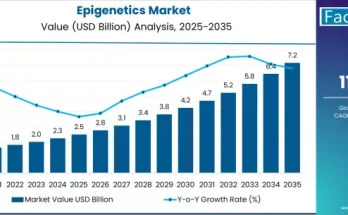The global blood cancer diagnostics market has witnessed substantial growth in recent years, driven by the rising prevalence of leukemia, lymphoma, and multiple myeloma. With increasing awareness, advancements in technology, and growing healthcare investments, the market is set for a strong expansion in the coming decade. Estimates suggest that the industry, which was valued at around US$15 billion in 2021, is projected to surpass US$28 billion by 2032, growing at a healthy CAGR of nearly 6%.
Key Market Drivers
Between 2017 and 2021, the market grew steadily, primarily supported by an increase in disease incidence and broader access to healthcare services worldwide. Today, several major factors continue to accelerate this growth:
- Technological advancements: Breakthroughs in diagnostic methods such as liquid biopsy, circulating tumor cell testing, protein marker detection, and bone marrow assays are significantly improving accuracy while reducing invasiveness.
- Accessibility and affordability: Wider availability of diagnostic instruments and affordable solutions in developing economies have made testing more accessible to broader populations.
- R&D investment: Expanding budgets for genetic research and diagnostic innovation are fueling the development of next-generation tests.
Regional Market Dynamics
- United States: The U.S. remains a leader in adoption of advanced diagnostic technologies, supported by a strong healthcare infrastructure and a relatively high incidence of blood cancers. The market here is expected to grow at close to 6% CAGR in the coming years.
- China: Rapid expansion of healthcare infrastructure, favorable government initiatives, and cost-efficient R&D are propelling growth at nearly 5.7% CAGR.
- Europe and Asia-Pacific: Countries such as the U.K., Japan, and South Korea are also witnessing strong adoption, supported by modernization of healthcare systems and emphasis on early detection.
Testing Modalities
Blood cancer diagnostics encompass a variety of approaches, each with unique advantages. Among them:
- Liquid biopsy: Expected to be the fastest-growing segment, with its non-invasive process and ability to monitor cancer progression and heterogeneity in real time.
- Complete blood count (CBC) tests: Widely used as a preliminary screening tool to detect abnormal blood cell levels.
- Circulating tumor cell (CTC) analysis: Offers insights into cancer spread and treatment effectiveness.
- Protein biomarkers: Help identify the presence of specific cancer-related proteins in the blood.
- Bone marrow biopsy: Considered a gold standard for definitive diagnosis of many blood cancers.
End-Use Segments
Hospital-associated laboratories account for the largest market share and are projected to maintain their dominance. Their ability to handle large patient volumes, conduct in-house testing, and provide comprehensive diagnostic services positions them as central to the market’s growth. Independent diagnostic labs and research institutes also play an important role, especially in the development of new testing methods.
Leading Market Players
The competitive landscape is a mix of global giants and innovative start-ups. Established players include companies specializing in diagnostics, biotechnology, and life sciences. Their focus lies on developing high-sensitivity testing tools, expanding distribution networks, and entering new regional markets.
At the same time, new entrants are pushing boundaries with disruptive technologies. For example, multi-omics platforms combining DNA, RNA, and protein analysis with artificial intelligence are opening up possibilities for earlier and more accurate detection. Other innovators are advancing RNA-based blood tests capable of identifying cancer presence and staging at very early levels.
Strategic Developments
The market is witnessing significant collaborative initiatives and product expansions, including:
- Partnerships between diagnostic innovators and healthcare providers to launch large-scale blood cancer detection trials.
- Expansion of liquid biopsy studies aimed at refining accuracy and scalability across patient populations.
- Strategic investments in overseas markets to tap into growing demand for cancer diagnostics.
- Integration of advanced technologies like AI, machine learning, and big data analytics to enhance predictive accuracy in test results.
Challenges Ahead
Despite the promising outlook, the blood cancer diagnostics market faces notable challenges:
- High equipment costs: Advanced diagnostic machines often involve significant capital expenditure, limiting access in resource-constrained regions.
- Competition from refurbished systems: In emerging markets, demand for second-hand equipment can restrain the uptake of new, high-cost devices.
- Regulatory barriers: Strict approval processes for diagnostic tools can delay time-to-market and adoption.
The Future of Blood Cancer Diagnostics
Looking ahead, the next decade will be transformative for the blood cancer diagnostics landscape. Several trends will shape its evolution:
- Rising adoption of liquid biopsy: This method is set to become a cornerstone for non-invasive cancer detection and monitoring.
- Digital integration: AI-driven diagnostics will enhance test accuracy, speed, and cost-effectiveness.
- Sustainability in healthcare: Efforts to reduce diagnostic costs while ensuring widespread access will become a critical focus.
- Collaborations and clinical trials: Partnerships between biotech firms, healthcare systems, and research institutions will accelerate innovation and large-scale implementation.
Conclusion
The blood cancer diagnostics market is on a trajectory of strong and sustainable growth. With its market size projected to nearly double by 2032, opportunities for innovation and investment are abundant. Advances in testing technologies, coupled with expanding healthcare infrastructure and rising patient awareness, will continue to redefine how blood cancers are diagnosed and managed. For industry leaders, investors, and healthcare providers alike, the coming years hold immense potential to reshape diagnostics for better outcomes and healthier lives.



